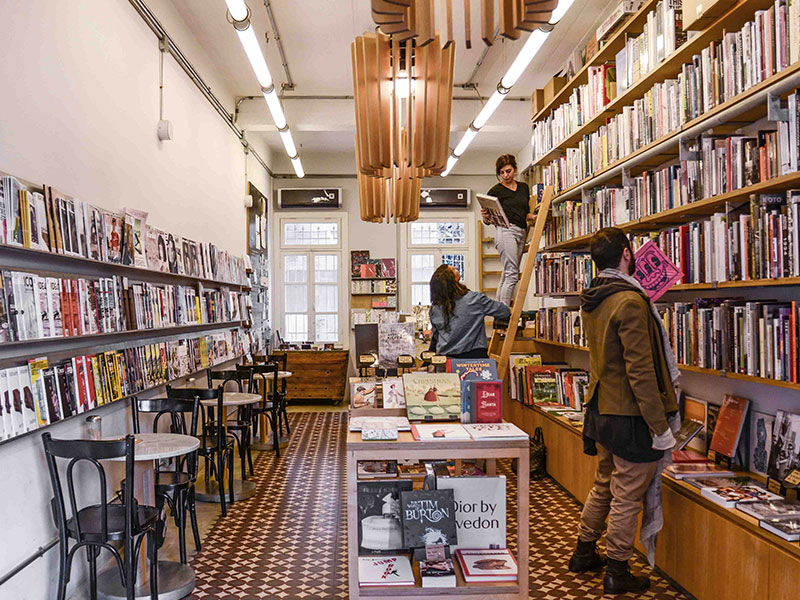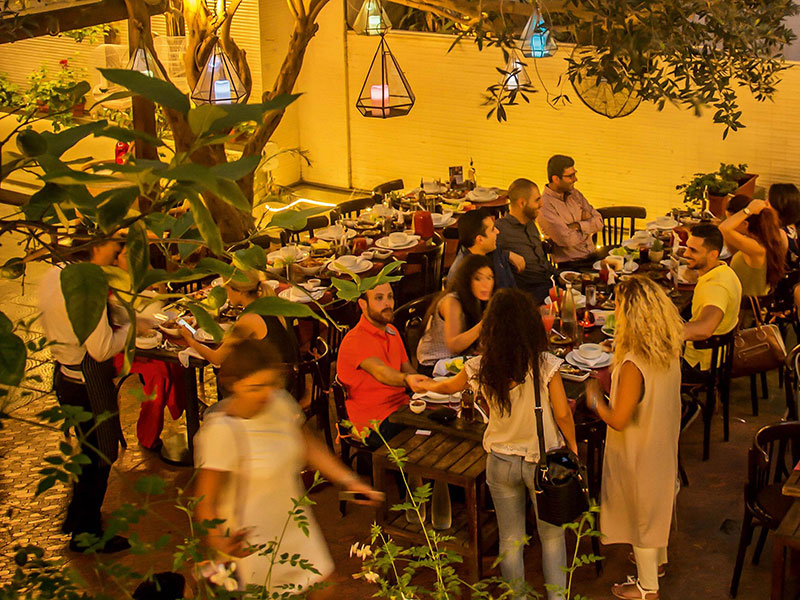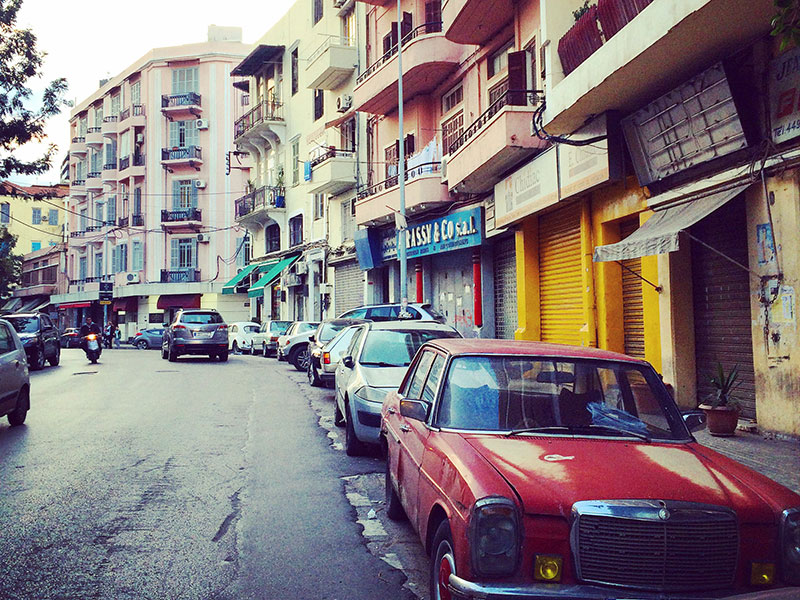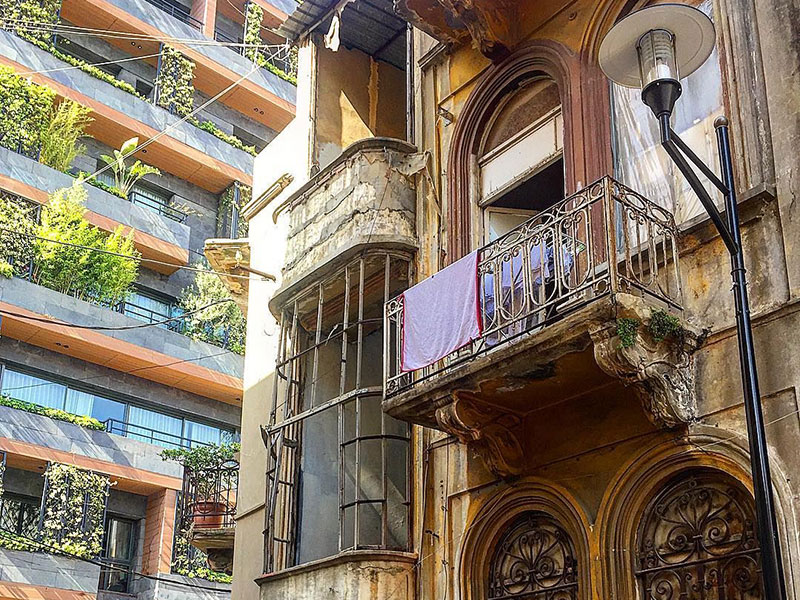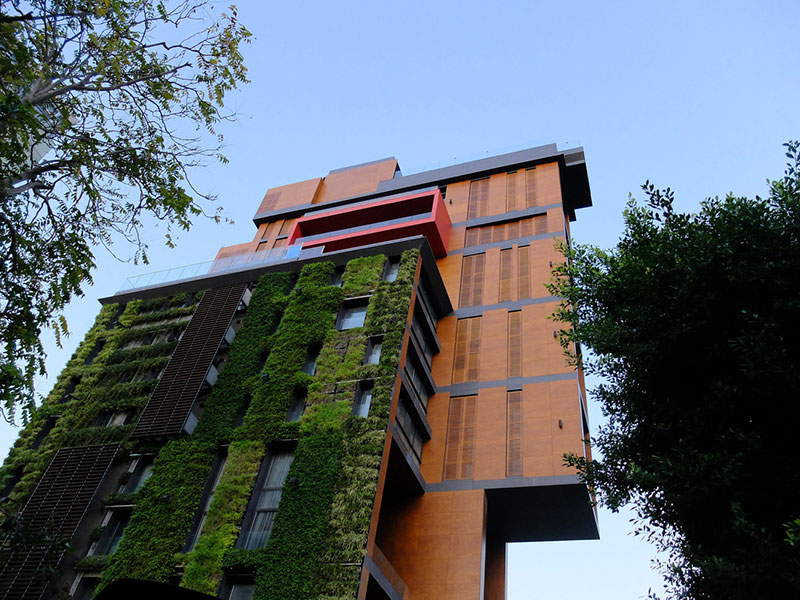Gentrification in Beirut
Like many cities around the world, Beirut is experiencing gentrification-from the reconstruction of the city’s downtown to the various residential neighborhoods. Unlike many other cities, however, the lack of basic building regulations and rule of law in Lebanon have made Beirut vulnerable to unusually rapid and uncontrolled transformations of neighborhoods.
One of the starkest examples of this trend is the area of Mar Mikhael, whose home prices, bars and noise levels have all multiplied in the past 10 years. In the midst of small old homes, tall apartment buildings are changing the skyline. It is difficult to tell when or if the pace of development in Mar Mikhael will ever slow down. One thing is for sure: with the changed skyline, culture and migration of longtime residents, it will never go back to what it was before gentrification.
As the sun sets, the sound of liquid being poured and glasses clinking raises, as the old narrow streets begin filling with people enjoying happy hour drinks after work. A couple of hours later, the dinner crowds take their seats at small outdoor bars, cafes and restaurants. Around midnight, the after-party drinkers continue piling into the main thoroughfare, Armenia Street, spilling onto a pavement that has been the host of bumper-to-bumper traffic, parking on sidewalks, and continuous honking since the beginning of the evening.
The next morning, residents wake up to the remains of the previous night – vomit, broken glass and litter. A few hours later, the cycle continues, as the next wave of partiers descends on the latest Beirut neighborhood that’s being loved to death. While gentrification - broadly defined as the process of urban renewability whereby affluent people and businesses move into historical and authentic working-class areas - typically leads to higher prices and standards of living, it often brings with it unintended consequences of economic displacement and the loss of neighborhood charm.
Like many other gentrified neighborhoods around the world, Mar Mikhael started as a working-class area with modest metalwork and handicraft shops. In the first familiar stage of change, artists began setting up shop about a decade ago, followed shortly thereafter by a handful of small bars and cafes, which were then followed by organized mass-commercial development.
By 2012, the neighborhood had nearly completely transformed from a sleepy historic area on the edge of Beirut to a hipster hotspot that has become largely unaffordable - and in many cases unrecognizable - to the older residents and shopkeepers. At the same time, its purpose has largely changed from a quiet place of residence to a nightly destination of people from outside the area.
“When I moved in, it was a community. Now when I come here on a Saturday morning, there is vomit and smashed beer bottles all over the place,” says Lee Frederix, an architect and artist, as well as an assistant professor at and interim chair of LAU’s Department of Art and Design, who after eight years is now closing his Mar Mikhael studio due to the area’s overdevelopment and congestion. Gentrification has driven him out.
Jewelry designer Cynthia Raffoul opened her shop at the beginning of Mar Mikhael’s main strip at the end of 2008, when it was still a quiet area. “People asked me, ‘Why are you moving here?’ I said it’s a nice place. I was one of the first people to believe in Mar Mikhael.”
“At that time, the landlords wanted to avoid the spread of pubs and restaurants, so they agreed to not rent to them, but that didn’t last long. Eventually one landlord caved in, it was the money, of course,” recalls Frederix, whose personal frustrations with the neighborhood began when he arrived at his studio one morning to discover a car parked on the sidewalk, preventing him from opening his front door.
“It’s great and terrible at the same time,” he said, acknowledging mixed feelings over the changing times that has meant both the loss of the old tight-knit neighborhood, as well as the injection of new life-a wide selection of international and experimental cuisines and cocktails impossible to find on this scale in Beirut before Mar Mikhael took off as a hotspot.
Such transformations are not unusual in cities throughout the world. What is unusual, in the case of Beirut, is the fast pace and intensity with which it happens.
“Gentrification is OK, as long as it happens gradually. But the turbo gentrification that happens in Beirut happens so fast that it’s not sustainable.
This hyper gentrification is unique to the capital. One area explodes and everything else dies,” says Frederix, referring to Mar Mikhael’s fast rise following other areas that have quickly gone in and out of style.
In the 90s, Monot was the hotspot. Gemmayze later replaced it. Both have since faded out, with only a handful of bars still remaining.
“Certainly, there are hotspots in every city, but in Beirut they’re exclusive. Pub owners know this and many make allowances in their business plans for this, because they know there’s quick turnover,” Frederix says.
Elie Azar, owner of Bar 35, opened the pub nearly two years ago, after running one in Jounieh for 10 years, which he closed due to the area’s decline in popularity. His lease in Mar Mikhael is for six years and after that he doesn’t know where he’ll be.
Another element that intensifies gentrification in Lebanon is its government policies or lack thereof. An absence of city planning, an overreliance on the private sector, and the continuation of old rental laws - in many cases with old tenants paying as low as $100 a year for properties valued at $2,000 a month - all combine to create abrupt changes.
“There’s no fair compensation for the displaced people, which makes gentrification cater for the privileged few at the expense of others,” says Roula Khoury, assistant professor of architecture at LAU. “The role of the banking sector is boosting the construction industry by giving loans, mostly to developers-not families. The absence of the state and the active role of banks is changing the morphology of the city.”
She adds, “By not playing a role, [the government] is employing others to play a drastic role. Lebanon is a very acute model of laissez faire. We call it neoliberal urbanization. It’s shapeless.”
“The process of renovation does not abide by any rules or regulations,” notes Tania Kallab, LAU adjunct economics professor. “Causes mainly related to the war, lead to unwanted inflation in prices, high supply and then stagflation.”
In addition, valet parking services, often charging as much as 10,000LL per car, offer a convenience and luxury that encourages people to bring their cars into a small neighborhood that doesn’t have the space to handle the traffic, resulting in nightly congestion, as well as noise and air pollution.
In the case of Mar Mikhael, the neighborhood seems chaotic, but beneath the apparent chaos are deliberate business models that fuel the area’s buzz and growth. Corporate-owned bar franchises have largely replaced the independent watering holes. Although their various names would suggest otherwise, most of Mar Mikhael’s bars are owned by a handful of firms that ironically cater to a clientele that tends to be attracted to the neighborhood’s bohemian charm.
“Larger corporations disguise themselves as little shops. They invade these areas under another image. They understand people’s taste,” says Khoury.
Such is the case with Bodo, part of a chain of bars and restaurants located throughout greater Beirut, which opened in the area four years ago. In Mar Mikhael, Bodo manager Boulos Saab says business is good although he sometimes gets frustrated with the street traffic, recalling a time several years ago when the area was “cozier” with much fewer bars. Saab expects the area to level off in a few years, once it reaches a saturation point.
Meanwhile, real estate development in Mar Mikhael has already changed its skyline and lifestyle. Luxury high-rise apartments and lofts have begun to spring up amid historic homes, bringing in wealthier residents who can better afford the high-end restaurants than the old-time neighbors.
With very little in the way of enforcing heritage home protection laws, there’s no reason to slow down the pace of these developments. Some companies have taken a more sensitive nuanced approach by keeping the façades of historic buildings and then gutting the interiors to make way for modern high-rises - keeping a tangible piece of heritage, but removing the heart of the area’s traditional lifestyle.
It is perhaps this type of comprise that is most symbolic of the current state of Mar Mikhael-a façade of heritage, but corporatization at its heart.
What is next for this neighborhood that has become a trendy hotspot due to its historic charm? Frederix, whose frustration with the area’s changes drove him out, takes a long-term optimistic view, as he looks back at other neighborhoods that have gone through similar transformations. He notes that Monot and Gemmayze, after having gone out of style, have now reached a balance making them once again pleasant places to live and visit, even if they don’t enjoy the “trendy” label.
He says he predicted the rise of Mar Mikhael, whose popularity he expects to last another two years, and he expects the next hotspot to be Corniche An-Naher.
